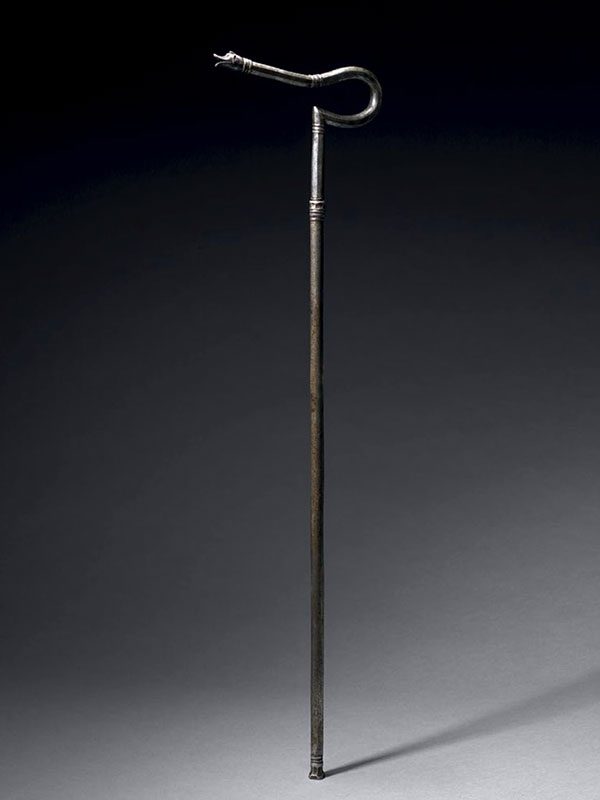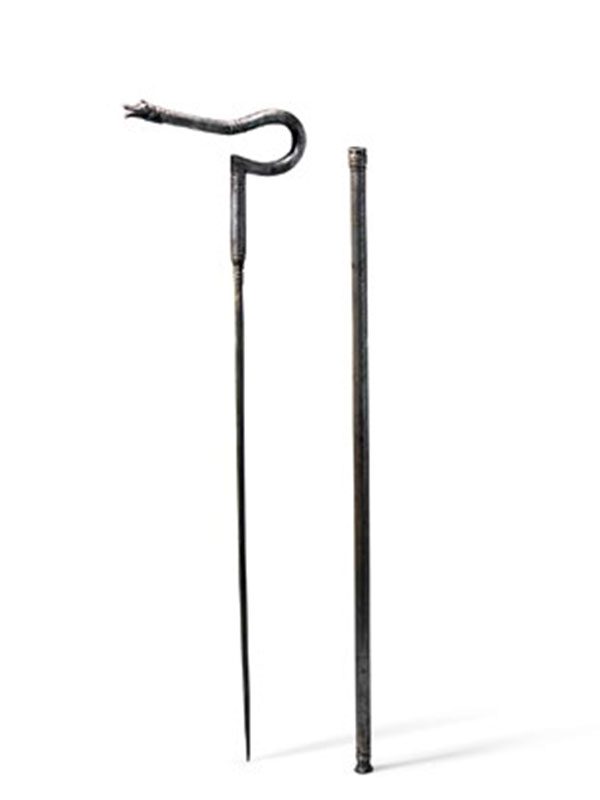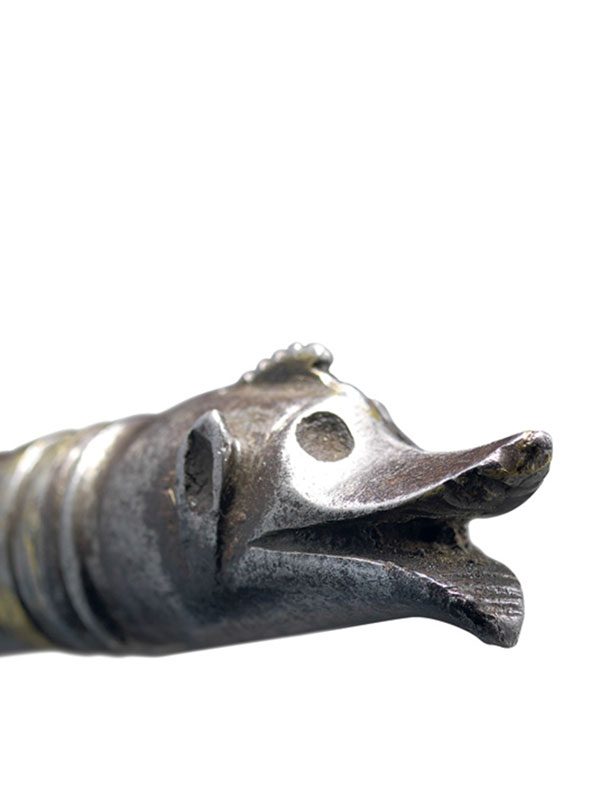Steel dervish crutch (Zadar Takiyah gupti)
A solid cast and chased steel crutch, or short prop. The shaft of the crutch is cylindrical and is undecorated. The faceted handle and collar are of serpentine form, which terminates in a head of makara. The grip unscrews in a clockwise direction underneath the handle away from the shaft to reveal a long square stiletto blade. The base of the shaft is flattened and shows signs of use.
This elegant dervish staff, or crutch handle (zafar takiyah gupti or ‘cushion of victory’) was designed to be lent upon whilst kneeling or reclining. The curved handle takes the weight of the body under the shoulder or at the elbow. Crutches of this type were associated with the elderly and were used by mystics in meditation or rulers holding court. Although dervish’s crutches are seen fairly regularly in Mughal paintings of dervishes[1], the actual crutches are quite rare. The animal-form is typical of the sub continent. Although the primary function of such sticks was to support the bearer, they sometimes had a secondary purpose with the concealed blade for the owners’ self-protection.[2] A comparable crutch is in the Khalili collection, London.[3] A dervish crutch from Persia is in the Tanavoli collection.[4] Other comparable gupti are published by Stone.[5]
- For an example see: Metropolitan Museum of Art New York, inv. no. 09.227.4
- Alexander, D., The Nasser D. Khalili Collection of Islamic Art, Volume XXI, no. 133, pp. 198-190
- Alexander, D., op.cit., no. 133, pp. 198-190
- Allan, J. and Gilmour, B., Persian Steel: The Tanavoli Collection, Oxford, 2000, no. 42, p. 315
- Stone, C., A Glossary of the Construction, Decoration and use of Arms and Armor in all countries and in all times together with some closely related subjects, New York, 1999, fig. 336, p. 270



